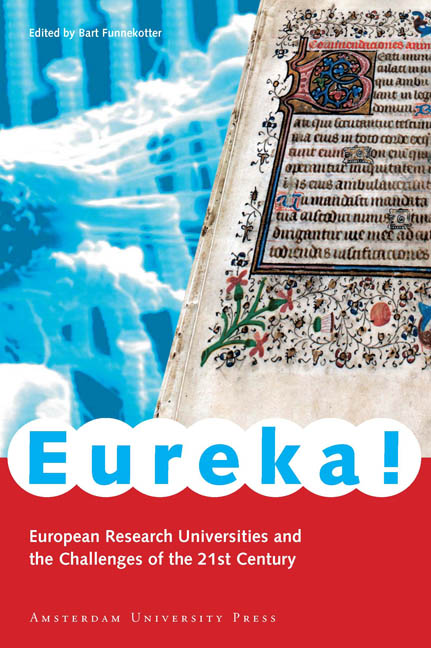Book contents
- Frontmatter
- Contents
- Foreword
- Introduction: Challenges of the Twenty-first Century
- Cambridge: Cambridge University
- Edinburgh: University of Edinburg
- Geneva: Université de Genève
- Heidelberg: Ruprecht-Karls-Universität
- Helsinki: Helsingin Yliopisto
- Leiden: Universiteit Leiden
- Louvain: Katholieke Universiteit Leuven
- Milan: Università Degli Studi Di Milano
- Munich: Ludwig-Maximilians-Universität
- Oxford: Oxford University
- Stockholm: Karolinska Institutet
- Strasbourg: Université Louis Pasteur
Stockholm: Karolinska Institutet
Published online by Cambridge University Press: 23 January 2021
- Frontmatter
- Contents
- Foreword
- Introduction: Challenges of the Twenty-first Century
- Cambridge: Cambridge University
- Edinburgh: University of Edinburg
- Geneva: Université de Genève
- Heidelberg: Ruprecht-Karls-Universität
- Helsinki: Helsingin Yliopisto
- Leiden: Universiteit Leiden
- Louvain: Katholieke Universiteit Leuven
- Milan: Università Degli Studi Di Milano
- Munich: Ludwig-Maximilians-Universität
- Oxford: Oxford University
- Stockholm: Karolinska Institutet
- Strasbourg: Université Louis Pasteur
Summary
Karolinska Institute in facts and figures:
Founded in 1810
5,309 students
3,868 staff
Budget € 385 million
Walking onto the campus of Stockholm's Karolinska Institute, you can easily miss it: a bust of Alfred Nobel, the spiritual father and namesake of the world's most coveted scientific award. The bust may be difficult to spot, situated as it is in a grassy park to the left of the entrance to the university, the street sign, reading Nobels väg, assures the visitor that this is no ordinary medical university. More than any other body, the Karolinska Institute determines who will win the annual Nobel Prize for Physiology or Medicine.
This fact alone is enough to make Karolinska Sweden's leading medical university, but even leaving that aside, the university has more than enough to be proud of. It represents a total of thirty percent of medical education in Sweden and conducts forty percent of the country's research. With over five thousand students and almost four thousand staff, the institute is one of the largest medical universities in all of Europe.
Despite these impressive statistics the Karolinska Institute, with its two hundred year history, is a relatively young university. It was named after the Swedish King Charles XIII, who founded it after being defeated by the Russians in the Finnish War of 1809-1810. Upon learning that one-third of all injured soldiers ended up dying, the King decided that something had to be done to improve the training of the army's doctors and surgeons. Thanks in part to the work of Jöns Jacob Berzelius, the renowned chemist who developed the atomic symbols which are still used today, Karolinska grew rapidly. By 1861, the year university status was conferred, there were eight professors and one 133 students. The next milestone was 1895, when Alfred Nobel decreed that the university would be the body to determine which scientists should be awarded the Nobel Prize.
Over one hundred years later it is clear that Karolinska has moved forward with the times. Scientists from the university collaborate with colleagues from across the globe, from Europe to the US and in Ethiopia, China and Thailand. Students and academic staff as well come from all over the world, and Karolinska has very recently opened its first foreign branch in Singapore.
- Type
- Chapter
- Information
- Eureka!European Research Universities and the Challenges of the 21st Century, pp. 138 - 149Publisher: Amsterdam University PressPrint publication year: 2005

